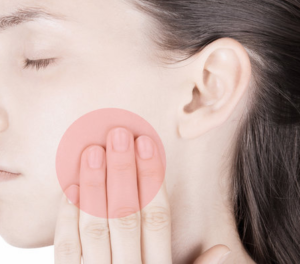If you have pain in your jaw, you could be suffering from a broad category of joint and muscle disorders that affect your temporomandibular joint. Located right in front of your ear, it’s the joint where your lower jaw bone called the mandible connects with your temporal bone.
Temporomandibular joint and muscle disorders are more commonly referred to as "TMJ." The condition affects millions of people in the United States and seems to affect women more than men.
What is TMJ?

If your dentist says you have TMJ, it means your jaw joints and associated muscles may not be working correctly. It can manifest in a variety of ways, including:
- Pain that radiates through the face, jaw, and neck
- Stiffness of the jaw muscle
- Limited movement in the joint
- Clicking, popping or grating when you open or close your mouth
- Changes in how the upper and lower teeth fit together
Is TMJ Serious?
TMJ is usually not serious. For most people, the pain occurs occasionally and is temporary. It can occur in cycles and the discomfort will usually go away with little or no treatment. For some people, though, TMJ causes significant, long-term symptoms.
How is TMJ Treated?
Dentists usually start out with very conservative treatments for TMJ. Oral stabilization splints are often used to hold the joint in a specific position to allow the muscles to relax. Over-the-counter analgesics are commonly used to control pain. We also recommend patients with TMJ do the following:
- Eat soft foods
- Avoid opening your mouth too wide
- Refrain from chewing gum
- Apply ice packs when pain occurs
- Perform exercises to stretch your jaw muscles
- Learn methods for relaxing and reducing stress
If these treatments don’t work, more involved approaches may be used. These include reconstructive dentistry, surgery, braces and dental implants to help your jaws fit together better. Read more about the benefits of dental implants here.
Think you might have TMJ? Please talk with us about it during your next comprehensive exam. We can help you create a plan of action to alleviate your discomfort.

